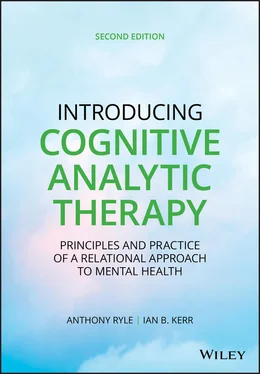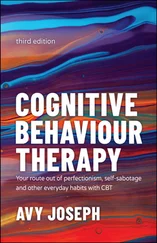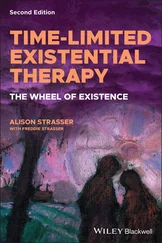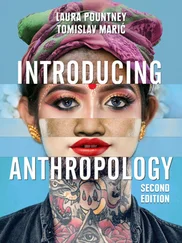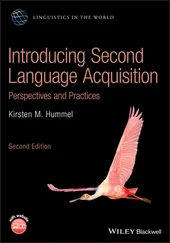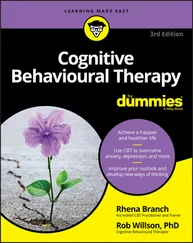Just as the realization that the world was not the center of the cosmos was resisted for a long time, so to think of the individual self as being formed and maintained in this social, interpersonal way, rather than as being the central source of thought and action, does seem to present major conceptual difficulties to many members of our contemporary professional culture. This point is returned to at the end of this chapter.
Long before language is acquired, children are active in the presence of others who, by gesture, expression, movement, rhythms, mimicry, sounds, and by jointly created rituals and symbols, communicate wishes, intentions, and meanings. Repeated parental responses which reflect, amplify, control, or ignore the child's actions and expressions offer a commentary on the child's activity, whether its object is a part of its own or its mother's body or a pattern of light or a spoon or a toy. These responses shape the child's understanding of the world and also constitute a defining example of the parent–child relationship and are hence a source of the sense of self.
From a Vygotksian viewpoint, signs are created and used between people or within cultures. A well‐known example of the creation of meaning and intention is provided by Clark's (1978) extension of Vygotsky's account of what happens when a child attempts to reach an object beyond its range. Whether it elicits from the caretaker assistance, encouragement, or removal from possible harm, the fact of the response transforms the attempt into a gesture which, with repetition, can come to serve as a statement of intent and as a means of influencing the caretaker, that is to say it becomes a jointly elaborated interpsychological sign (see Leiman, 1992).
Within psychoanalysis, Winnicott's understanding of the transitional object as standing for the mother in her absence was an example of such an interpsychological sign and was related to his insistence that the mother–baby dyad was the proper focus of attention for developmental psychology. Language is a shared system of signs which is “de‐contextualized” and hence flexible, allowing more abstract and theoretical forms of thought. It creates for the individual (as it did, in the course of evolution, for the species) the possibility of conscious self‐knowledge and it represents an important human way of making sense of the world. However, as noted previously, important formative, early, relational experience also occurs pre‐verbally in the first couple of years of life. As such this remains beyond the reach of conscious linguistic memory or recall although its effects may be incorporated at a deeper bodily level and be profound.
One of Vygotsky's well‐known statements was: “What the child does with an adult today she will do on her own tomorrow.” In this he was proposing a two‐stage learning process whereby interpersonal activity, involving the development and use of skills and the acquisition of concepts which convey meaning, always precedes internalization. In this way, speech, which is first acquired in conversation with others, is practiced in conversation with the self (the instructions and commentaries and judgments of their own actions of young children bearing witness to this) before finally “going underground” as the internal speech which is a main component of conscious thought. It is important to recognize that the “protoconversations” between mother and infant (see Braten, 1988, 1998; Trevarthen, 1993, 2017), and the RR relationships they embody, which are major determinants of the development of personality, involve pre‐linguistic mediating tools and are, as a result, largely unavailable to conscious reflection. It will be clear from this account that internalization of external interpersonal activities takes place by way of signs conveying meanings (see also Boyes, Guidano, & Pool, 1997; Cox & Lightfoot, 1997) and is quite distinct from representation. An important feature of Vygotsky's concept of internalization is that the process is also understood to transform the psychological structures that mediate it.
The Zone of Proximal Development (ZPD)
This is defined as the gap between what a child is able to do alone and what he or she could learn to do with the provision of appropriate help from a more competent other, who may be parent, teacher, or peer. The good teacher will aim to work in the ZPD, not assuming that current performance is a measure of capacity, by providing what Bruner (Wood, Bruner, & Ross, 1976) described as a “scaffolding” in the form of support and the provision and development of the appropriate conceptual tools which are then “handed over” to the pupil. Importantly, this also implies a “prospective” view of development (and of therapy). The aim is to explore where one can get to rather than interpret where one came from, as in some forms of psychoanalysis. This stance has some commonality with the “synthetic” and prospective therapeutic position stressed in analytical (Jungian) psychology (Samuels, 1985). It is clear that individual therapists should aim to work within the ZPD, but the same is true of the opportunities for learning through peers as provided in groups.
Developmental Studies of Role Acquisition
The key importance of RRs in CAT theory was first fully presented in Ryle (1985). However, it was derived from early work with the dyad grid and from clinical experience and was discussed prior to the evolution of CAT as such (Ryle, 1975). This involved in particular a restatement of ideas put forward by Ogden (1983). From a quite different background (see also Boyes, Guidano, & Pool, 1997; Cox & Lightfoot, 1997), the basic importance of RRs in early development are described by Oliviera (1997, p. 116) in her summing‐up of a detailed and sensitive Vygotskian study of interactions between children in day care aged between 1 and 6. She writes: “From birth, the child is involved in social matrices in which meanings are constructed in each baby–caregiver dyad. Then, in the dynamic process of coordination of the roles that the partners assume in the here‐and‐now situation, a confrontation of needs, goals and senses is created. While playing roles … the individual has to follow, not necessarily in a conscious manner, a way of acting that involves complex abilities, dealing with postures, gestures and emerging representation… Children become able to master several role relationships … while interacting with others with their own and maybe opposite intentions. The as‐if atmosphere created in symbolic play and in other situations … allows them to examine and modify some rules and images mediating their interactions.”
Oliviera's study traced the development of forms of collaboration from the 1‐year‐old's use of expressive gestures and reciprocal imitation through the creation by 2‐to‐4 year‐olds of “a collage of fragments of experiences” integrated by a range of signs or “starters,” including the use of language to take turns and reverse roles. Between 4 and 6 this “memory in action” is increasingly replaced by speech and by rule‐governed playing as the process of alternate imitation and reciprocation continues.
Oliviera's paper serves as a reminder of the extent to which other children are involved in the acquisition of RRs, but it is important to recognize the particular power of parents who may impose rather than negotiate their RR patterns and who have the power to define the agenda. The parents' personal restrictions and distortions may create idiosyncratic and confusing patterns and they may be unable to supply mediating concepts with which to make sense of some aspects of reality. This last point can be underlined by paraphrasing Vygotsky as follows: “what the child does not do or say with the adult today she will not do or say on her own tomorrow.”
Читать дальше
